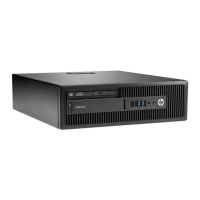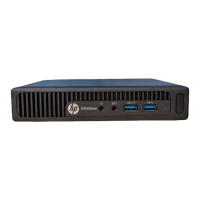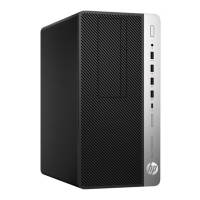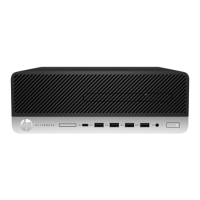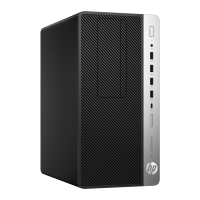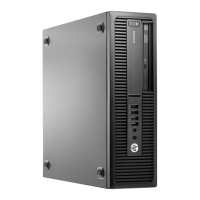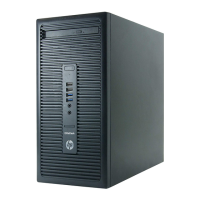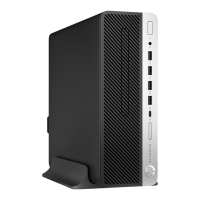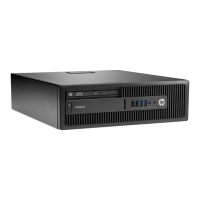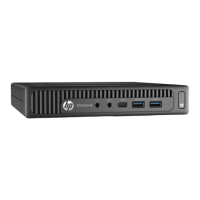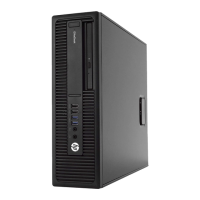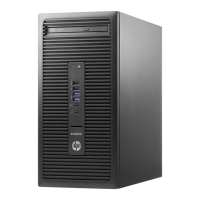
Do you have a question about the HP EliteDesk 705 G2 and is the answer not in the manual?
| Processor family | AMD |
|---|---|
| Built-in processor | No |
| Audio system | Realtek ALC221 |
| Optical drive type | DVD Super Multi |
| Motherboard chipset | AMD A58 |
| Compatible processor series | AMD A |
| Trusted Platform Module (TPM) | Yes |
| Trusted Platform Module (TPM) version | 1.2 |
| Memory slots type | DIMM |
| Number of memory slots | 4 |
| Maximum internal memory | 32 GB |
| Storage drive sizes supported | 2.5, 3.5 \ |
| Supported storage drive types | HDD & SSD |
| PCI Express x1 slots | 2 |
| PCI Express x16 slots | 1 |
| HDMI ports quantity | 0 |
| PS/2 ports quantity | 11 |
| USB 2.0 ports quantity | USB 2.0 ports have a data transmission speed of 480 Mbps, and are backwards compatible with USB 1.1 ports. You can connect all kinds of peripheral devices to them. |
| USB 3.2 Gen 1 (3.1 Gen 1) Type-A ports quantity | 6 |
| Chassis type | SFF |
| Cooling type | - |
| Product type | PC barebone |
| Product color | Black |
| Power supply | 200 W |
| Power supply type | Internal power supply unit |
| Compatible operating systems | - Windows 10 Pro 64 bit, Windows 10 Home 64 bit, Windows 8.1 Pro 64 bit, Windows 8.1 64 bit, Windows 7 Professional 64 bit, Windows 7 Professional 32 bit, Windows 7 Professional 64 bit, Windows 7 Professional 32 bit - NeoKylin Linux 64 - FreeDOS 2.0 |
| Sustainability certificates | ENERGY STAR |
| Certification | EPEAT Gold |
| Depth | 380 mm |
|---|---|
| Width | 338 mm |
| Height | 100 mm |
| Weight | 6600 g |
Details components on the front of the PC with labels.
Details components on the rear of the PC with labels.
Explains ESD and how to prevent damage from static electricity.
Outlines essential steps and safety precautions before disassembling the computer.
Provides step-by-step instructions for removing and installing optical and hard drives.
Covers the procedure for removing and installing the processor.
Provides instructions for removing and replacing the power supply.
Covers the procedure for removing and replacing the system board.
Explains the capabilities and usage of the Computer Setup (F10) Utility.
Covers common issues like system lockups, input devices, performance, power, and component errors.
Addresses common causes and solutions for power supply issues.
Provides solutions for hard drive errors and performance issues.
Offers solutions for common display and video output issues.
Addresses common causes and solutions for memory-related issues.
Lists POST errors with numeric codes and text messages, with recommended actions.
Explains how to interpret diagnostic codes from front panel LEDs and audible signals.
Details the procedure for resetting passwords by moving the jumper.
Covers the procedure for clearing and resetting CMOS settings.
Covers creating recovery media, backups, and system recovery processes.
Details recovery options using HP Recovery Manager or Windows tools.
